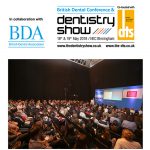‘Root canal’ may be two of the most dreaded words for dental patients, but endodontic treatment, though complex, has a very high success rate. Indeed, a rate of 88% according to one study of over 1.5 million teeth.
Endodontic treatment has evolved, and efficiency has improved with the move towards machine-driven rotary equipment. Many patients are now spending fewer hours in the dentist’s chair, which is beneficial for both patient and dentist. However, this does not mean that all cases are problem-free. Complex cases will need an expert working on them; if you are a general dentist, it is wise to know when to refer your patients to another practitioner, in order to optimise their treatment.
Some of the potential complications will mean that the patient requires additional treatment – e.g. if the tooth has more root canals than would be expected and this is missed during treatment. Without using loupes or a surgical microscope, the smaller additional canals may not be easily visible, and of course, left untreated, any additional canal could become the source of great discomfort, forming an area of persistent infection.
Secondary infection could complicate matters, with the link between periodontal infections and endodontic lesions – though not yet fully explored – clearly problematic. There is strong evidence that bacteria found in infected pulp most likely originates in periodontal pockets, and endodontic infections are likely to fuel infection in periodontal pockets. This link suggests that both issues would need to be treated to ensure success. One pilot study has shown that performing endodontic therapy prior to treatment for periodontitis can be effective.
Human error is also an issue, such as in the case of a root canal perforation. If the side of the root canal is perforated with either a handpiece or file, and the filling material is not properly confined, this can increase the chances of the treatment failing.
With so many potential complications, it is clear that developing skills and expertise is necessary to retain the high success rate for endodontic treatment. Once you have honed your technique through postgraduate study and practice, it is also important to choose the right materials, to achieve the very best results for your patients.
The Harvard® system is one example of reliable materials. With a long history of providing expert cements and fillings for dentistry, Harvard® has the first range of materials in individual capsules to save time and reduce wastage. Available exclusively in the UK from Dental Express (a trading division of Surgery Express LLP), their products include an MTA capsule specially designed for use with root perforations.
Whether straightforward or complex, when you get to the root of the matter, when performing endodontic therapy the first priority is the patient. Knowing when to refer, and choosing the best materials, are two ways you can make sure you are putting your patients first.
For more information, visit www.dental-express.co.uk, call on 0800 707 6212 or email at sales@dental-express.co.uk
Chen, L.H et al. Outcomes of root canal treatment and restoration, implant-supported single crowns, fixed partial dentures, and extraction without replacement: a systematic review. J. Prosthet. Dent. 2007 Oct; 98(4): 285–311
Lačević, A., Foschi, F., Pojskić, L., Pojskić, N., Bajrocić, K., Izard, J. Correlation of periodontal pathogens in concurrent endodontic-periodontal diseases. Archives of Oral and Dental Research, (2015) 2:4
Vakalis, S.V., Whitworth, J.M., Ellwood, R.P., Preshaw, P.M. A pilot study of treatment of periodontal-endodontic lesions. International Dental Journal 2005; 55:5: 313–8
Tabassum, S., Raza Khan, F. Failure of endodontic treatment: The usual suspects. Eur. J. Dent. 2016 Jan–Mar; 10(1): 144–7
















